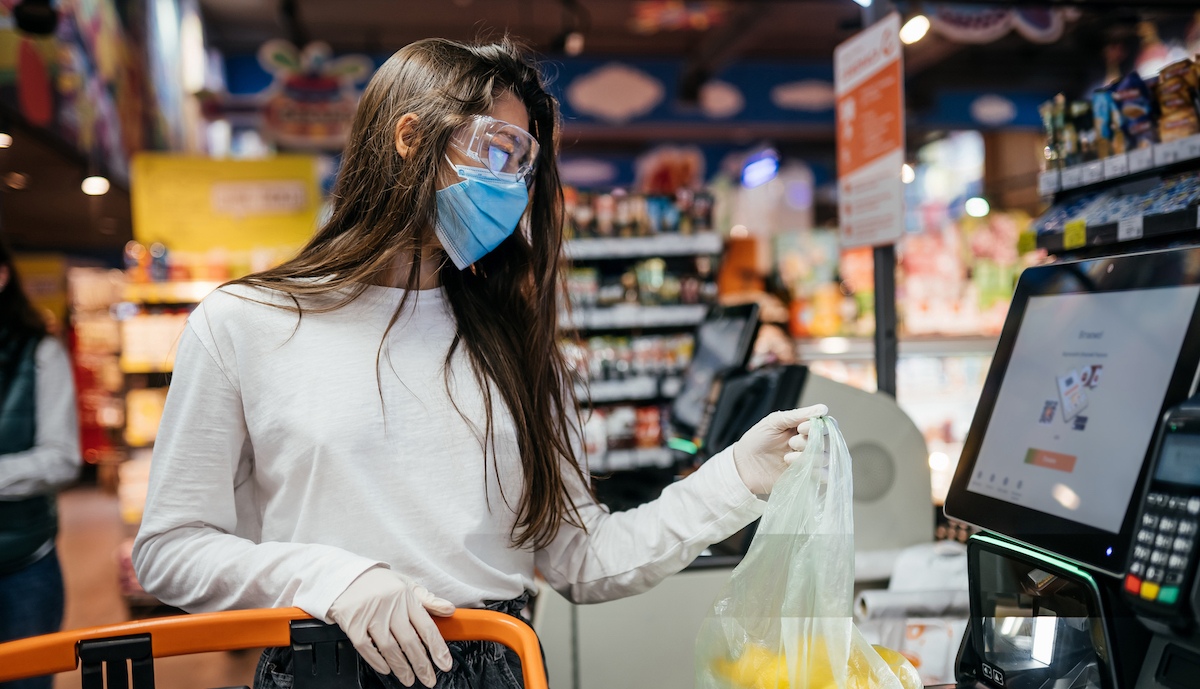
Touchscreens, Other Surfaces Present Little Or No COVID-19 Transmission Risk: Research
February 23, 2022 by Dave Haynes
It’s been roughly two years since COVID-19 became a daily discussion and the industry started wondering what all this would mean to business and the use of interactive technologies that encouraged touch actions.
In the early days of the novel-coronavirus pandemic, it was widely thought that the pathogen was spread by touching surfaces, prompting no end of discussions and video demos on washing hands and deep cleaning surfaces. All that discussion had people like me wondering if this was going to damage or doom the touchscreen business.
Two years on, with a lot more research and real-world experience under the world’s collective belts, the science tends to point to COVID spread happening almost exclusively through the air – hence the emphasis on masks … and getting vaxxed.
A new peer-reviewed study in the journal of the American Chemical Society suggests there are few, if any, documented cases of COVID spreading by way of what are called fomites – the science term for virus covered surfaces.
Via MSN (hat tip Tom McGowan for noticing this piece):
A new study led by Jessica Kramer, a biomedical engineer at the University of Utah, found that the same spittle that helps spread the virus in the air actually blocks it from later infecting someone via surfaces as the liquid dries.
“Our data indicate that the mucin molecular structure plays a complex and important role in host defense,” Kramer and her teammates wrote in their peer-reviewed study, published on Feb. 14 in the journal of the American Chemical Society.
The safe, highly effective vaccines (available for free in the U.S.!) are still the best way to protect yourself from COVID, of course. But no vaccine is perfect. As a backup to vaccine-induced immunity, we could make our homes and businesses safer. But as Kramer’s study indicates, a deep clean isn’t the way. “The risk of contracting coronavirus from touching a surface is quite low,” she told The Daily Beast.
That’s not what researchers claimed early in the pandemic. One study, published in The New England Journal of Medicine in April 2020, found that the SARS-CoV-2 pathogen remained “viable” on surfaces for up to three days. Other studies claimed the virus remained viable for up to several weeks.
But there was a problem with those early experiments: prior studies on surface transmission looked at the virus’s survival in water. “But, of course, people don’t sneeze out water,” said Kramer. “They sneeze out mucus.”
Viruses interact differently with water than they do with mucus, Herek Clack, a University of Michigan engineer who specializes in protection from viruses, told The Daily Beast. For one, mucus evaporates slower than water does, Clack said.
More importantly, our snot and saliva contain proteins as well as sugars called “glycans.” Water doesn’t. And those proteins and sugars make a huge difference when it comes to spreading, or not spreading, the coronavirus via surfaces.
There have been numerous products brought to market that have encouraged things like touchless, gesture-based interaction, or throwing the navigation UX or information to phones by putting a URL in a scannable QR code. There was also a rush of products that were anti-microbial or had UV lighting touted as capable of killing pathogens.
But the touchscreen industry has found, generally, that after an initial dip at the head of the pandemic, business actually increased. As understanding grew that the main transmission risk was one to one contact, and as staffing shortages grew common in retail and QSR, the best workaround was self-service screens that removed or minimized the need for direct customer-staff interaction.
I think we’re all now so heavily conditioned to squirting some hand sanitizer on after using touchscreens and payment terminals that the presence or not of COVID pathogens is just one consideration. Hygiene habits are so wildly varied that sanitizing is just a good way to block out thoughts about what might be left on that surface by people with bad habits.



For sure touchscreens and self-service reduce the number of infections. Always true and still true. And best practice is to regularly clean screens (soap and water is fine). The study was based on bovine (cattle) mucus and simulated sneeze onto surfaces right? What about oily finger touchscreen users? There are a number of variations and while it is nice to see studies, I don’t think all the data is in either.
There is a lot of fake science out there and depending on who commissioned the study and what their objectives were trying to support. Supplier of PPE whether it’s face masks or surface technology is completely with a hidden agenda.
The fact is that infection prevention is better than the cure and whether it’s a bacterial or virus infection transfer risk.
We can do more than coughs and sneezes spread diseases and hand washing, cleaning surfaces are the only tools to propagate infection control.
You can make a million match sticks from 1 tree but 1 match stick can burn a million trees !